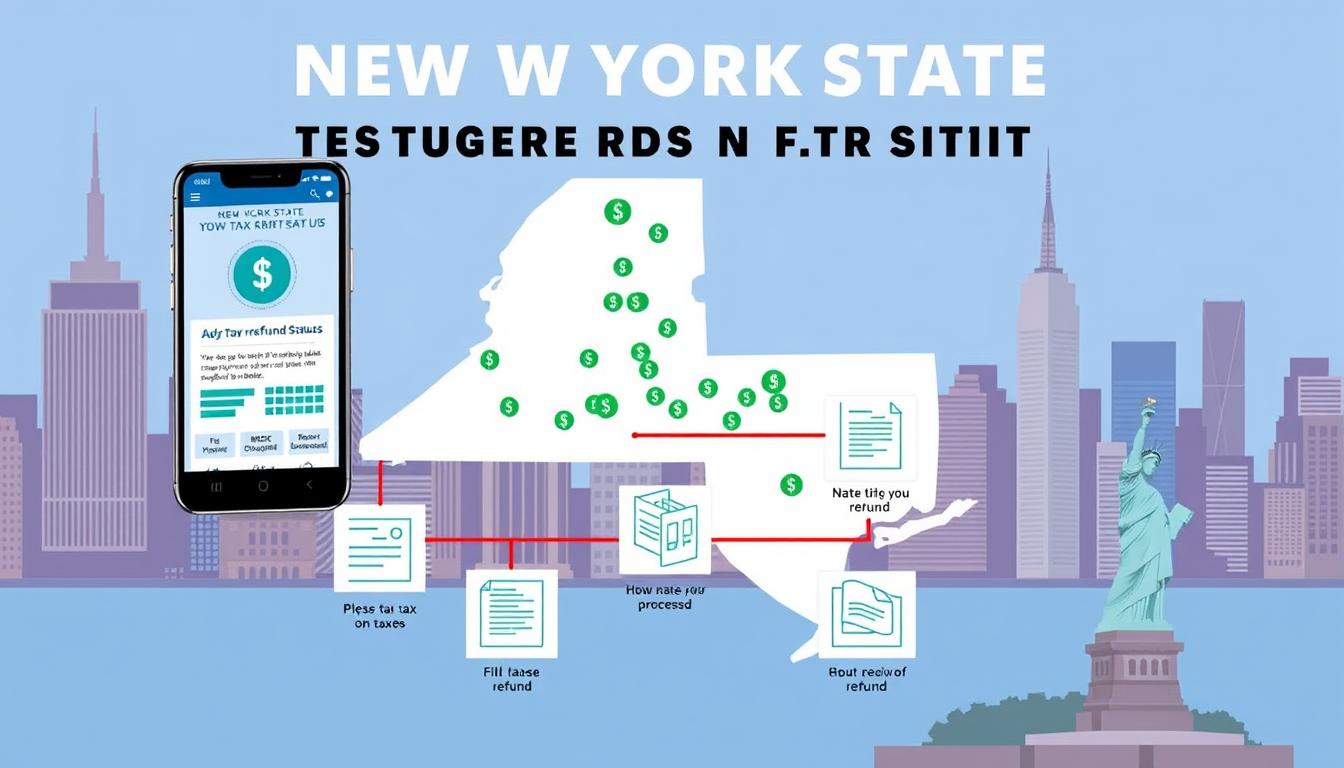You might owe taxes this year due to insufficient withholding, life changes, or unexpected income increases. If you haven't adjusted your W-4 recently, your tax withholdings may not reflect your current financial situation. Additionally, salary raises or new jobs could have pushed you into a higher tax bracket. If you're self-employed, you may face substantial tax responsibilities that require quarterly payments. All these factors can lead to a surprising tax bill. Want to understand more about how to manage your tax obligations effectively? There's plenty to explore on this topic to minimize future surprises.
Key Takeaways
- Insufficient withholding adjustments on Form W-4 may have led to unexpected tax bills for many individuals this year.
- Increased earnings and new jobs can push taxpayers into higher tax brackets, resulting in higher tax liabilities.
- Changes in tax laws, such as increased standard deductions, may alter tax calculations and affect overall tax owed.
- Self-employment tax responsibilities and lack of estimated payments may contribute to a larger tax bill for freelancers and gig workers.
- Many taxpayers are unaware of available deductions and credits, leading to underutilization and higher tax obligations.
Insufficient Withholding Issues

Insufficient withholding from your paycheck can lead to a surprising tax bill at the end of the year. If you don't have enough withheld, you may end up owing taxes when you file. To avoid this, regularly adjust your Form W-4 with your employer. This form is crucial because it tells your employer how much tax to withhold based on your current situation.
If your circumstances change—like a new job, a raise, or personal life changes—updating your W-4 can help ensure you're withholding enough.
If you find yourself owing $1,000 or more at tax time, you'll need to pay at least 90% of your federal tax liability before April 15 to avoid penalties. The IRS has safe harbors that can protect you against penalties if you pay 100% or 110% of your prior year's tax liability, depending on your income level. In 2023, the average federal estimated tax payment penalty rose to $500, emphasizing the importance of adequate withholding throughout the year.
Keep in mind that penalties can accumulate quarterly if you don't meet these safe harbor amounts. With rising interest rates, the penalties have also increased significantly, making it essential to stay on top of your withholding and adjustments to avoid unexpected tax bills.
Impact of Additional Income

As your earnings increase, so does your tax liability, which can catch you off guard if you're not prepared. Higher income often pushes you into a higher tax bracket, meaning you'll owe more in taxes.
Additionally, if your adjusted gross income exceeds certain thresholds, you might face the 3.8% net investment income tax and the 0.9% additional Medicare tax. It's crucial to adjust your W-4 form to reflect your increased earnings to avoid underwithholding.
You should also consider how your higher income affects your eligibility for tax deductions and credits. Changes in tax brackets for 2024 may slightly alter your liability, but keep in mind that an increased standard deduction could help reduce your taxable income. Furthermore, be mindful that high-income taxpayers are subject to both the NIIT and the additional Medicare tax if their income exceeds the specified thresholds.
If you have investment income, be aware of how capital gains taxes apply based on your earnings. For instance, if your taxable income exceeds $47,025, you may owe capital gains taxes on your investment profits.
With careful planning and awareness of these additional taxes, you can manage your tax liability more effectively.
Understanding Self-Employment Tax

Self-employment tax affects millions of individuals who earn income through freelancing, gig work, or running their own businesses.
When you calculate your self-employment tax, start by determining your net earnings, which is your total income minus qualifying business expenses. Multiply this net income by 92.35% to find the taxable amount.
You'll pay a 12.4% Social Security tax on that amount, but remember, this applies only up to the income limit of $168,600 for 2024. Additionally, there's a 2.9% Medicare tax with no income cap. Together, these taxes make up a total self-employment tax rate of 15.3%. Self-employment tax is essential for ensuring that you contribute to your future benefits under Social Security.
To report this, use Form 1040 Schedule SE. You can also claim a deduction for half of your self-employment tax when filing your return.
To lower your self-employment tax burden, track your business expenses meticulously and utilize allowable deductions. Contributions to retirement plans and health savings accounts can further reduce your taxable income.
Lastly, consider making quarterly estimated tax payments to avoid penalties and ensure you meet your tax obligations on time.
Effects of Life Changes

Life is full of changes, and each one can significantly impact your tax situation. Whether you've recently married, divorced, or changed your filing status, these life events can alter your tax brackets and available credits.
For instance, moving from Single to Married Filing Jointly increases your standard deduction to $29,200 in 2024, potentially lowering your tax bill. Additionally, it's important to note that the increased standard deduction reduces your taxable income, which can provide further tax relief.
Adding or removing dependents also plays a crucial role in your taxes. Welcoming a new child could qualify you for valuable credits like the Child Tax Credit, while older children aging out might do the opposite, reducing your credits and increasing your tax owed.
Changes in income can further complicate matters. Starting a new job or taking on side work might push you into a higher tax bracket, leading to a larger tax bill.
Finally, relocating or working remotely in multiple states can require you to file in different jurisdictions, affecting your overall tax liability.
It's essential to stay aware of these life changes and adjust your tax strategies accordingly to avoid surprises when tax season arrives.
Recent Tax Code Changes

Navigating the latest tax code changes can feel overwhelming, but understanding them is crucial for managing your financial situation this year.
The standard deductions have seen increases for 2024, with single taxpayers now able to claim $14,600—up $750 from last year. If you're married filing jointly, your deduction rises to $29,200, a $1,500 increase. For heads of household, the standard deduction is now $21,900, reflecting a $1,100 increase. Certain deductions can further reduce your taxable income, allowing you to optimize your overall tax liability.
The federal income tax brackets have also been adjusted, with rates ranging from 10% to 37%. The top rate applies to single filers earning over $609,350 and married couples over $731,200.
Additionally, the capital gains tax-free threshold has increased to $47,025 for individual filers, with rates of 15% and 20% applying to higher incomes.
Lastly, retirement savings contributions are set to rise, encouraging you to save more while reducing your taxable income.
These changes can significantly impact your tax liability, so staying informed is key to optimizing your financial strategy this year.
Payment and Planning Strategies

When it comes to managing your tax obligations this year, employing effective payment and planning strategies is essential. Start by identifying your capital gains and losses; request a report to assess your investments.
If you have loss-making investments, consider selling them to realize losses that can offset capital gains. Remember, you can use capital losses to offset up to $3,000 of ordinary income annually and carry over any unused losses to future years. Additionally, consult with your advisor for tailored capital gains strategies to optimize your tax situation.
Maximize your retirement contributions before year-end, as these can be tax-deductible, reducing your taxable income.
Don't forget about required minimum distributions (RMDs) from your accounts to avoid hefty penalties.
Charitable donations can also provide tax deductions, so make sure your itemized deductions exceed standard limits. If you're 70½ or older, consider qualified charitable distributions (QCDs) from your IRA to fulfill RMDs while benefiting a charity.
Lastly, prepare a pro forma tax return to estimate your tax liability and adjust your withholding accordingly.
If you're self-employed, consider making quarterly estimated tax payments and maintaining a separate bank account for these obligations.
These strategies can help you manage your tax bill effectively this year.
Importance of Updating W-4

Regularly updating your W-4 is crucial to ensure your tax withholding aligns with your current financial situation. Life changes like marriage, divorce, or having children can significantly impact your tax filing status and available deductions.
For instance, if you get married or have a child, you might qualify for tax credits that can lower your tax bill. Conversely, if your child turns 18 or you end a second job, your withholding needs adjustment. Changes in marital status and the birth of a child may necessitate a new W-4, as these events can alter your tax situation.
Not keeping your W-4 updated can lead to underwithholding, which means you could face a hefty tax bill at the end of the year, or overwithholding, resulting in less take-home pay. Ideally, you want to adjust your W-4 to aim for a $0 tax bill or a refund that matches your expectations.
You can submit a revised W-4 at any time, and employers typically process these updates quickly. Regular reviews, ideally annually, help ensure your withholding matches your current tax liability.
Utilize tools like the IRS tax withholding estimator and worksheets on the W-4 form to make necessary adjustments. Taking these steps keeps you on track with your taxes and financial goals.
Managing Tax Liability Effectively

Updating your W-4 is just one step in the broader strategy of managing your tax liability effectively. You should plan throughout the year by estimating your likely tax bracket and identifying strategies to lower your taxable income. Regularly review your financial situation and adjust your contributions, especially to retirement accounts like a 401(k) or Health Savings Accounts (HSAs). These contributions can significantly reduce your gross taxable income, particularly with maximum contribution limits increasing every year.
Maintaining good records is crucial. Keep track of your income and expenses to ensure accurate tax calculations. If you're self-employed, estimate your tax payments and set aside funds accordingly. At year-end, look for last-minute opportunities to reduce your tax bill, such as additional contributions to your retirement accounts.
Don't forget about tax credits and deductions. Explore available credits for things like electric vehicles and maximize deductions by itemizing when beneficial. If you have investments, consider tax-loss harvesting to offset capital gains, but be mindful of the wash sale rule.
Ultimately, effective management of your tax liability involves year-round planning, leveraging tax-advantaged accounts, utilizing available credits, and optimizing your financial decisions to minimize your tax burden.
Frequently Asked Questions
What Are Common Mistakes People Make on Their W-4 Forms?
When completing your W-4 form, you might make some common mistakes. You could accidentally fill out unnecessary sections or leave information incomplete, which can lead to errors in withholdings.
Always ensure your handwriting is legible and avoid making illegal modifications. Remember to update your form annually or after life changes, like marriage or having a baby.
Keeping your W-4 current helps you avoid penalties and ensures accurate tax withholdings.
How Can I Find a Reliable Tax Professional?
To find a reliable tax professional, start by checking credentials like CPA, EA, or CTP certifications.
Look for experience in your specific tax situation and read online reviews.
Ask for references and ensure they follow a professional code of conduct.
Verify their fees are transparent and avoid those who charge based on your refund.
Finally, ensure they're accessible after filing and request all necessary documents for accurate preparation.
What Records Should I Keep for Tax Purposes?
You should keep various records for tax purposes to ensure you're prepared.
Retain W-2 and 1099 forms for income verification. Gather receipts for deductible expenses, charitable donations, and medical costs.
If you run a business, maintain sales invoices, payroll records, and bank statements.
Don't forget to save mortgage interest statements and educational expense records.
Keeping these documents organized will make filing your taxes smoother and help you claim all eligible deductions.
How Do Tax Credits Impact My Overall Tax Liability?
Tax credits directly reduce your overall tax liability by the amount of the credit.
For instance, if you owe $1,000 and qualify for a $300 credit, your liability drops to $700. Refundable credits can even give you a refund if they exceed your tax owed.
However, nonrefundable credits won't provide a refund if your tax liability is already zero.
It's essential to understand these credits to maximize your tax savings.
What Are the Penalties for Not Paying Taxes on Time?
If you don't pay your taxes on time, you'll face several penalties.
The IRS charges a late payment penalty of 0.5% per month, which can increase to 1% if you ignore their notice. For late filing, it's 5% per month, with a minimum penalty if you wait over 60 days.
Plus, interest at 8% accrues daily on unpaid amounts.
It's crucial to handle your taxes promptly to avoid these costly fees.
Conclusion
In summary, it's crucial to understand the reasons behind owing taxes this year, from insufficient withholding to life changes and tax code updates. By staying informed and adjusting your W-4, you can better manage your tax liability moving forward. Consider exploring payment and planning strategies to avoid surprises next year. Remember, being proactive now will help you navigate future tax seasons with confidence and ease. Don't let unexpected taxes catch you off guard again!









